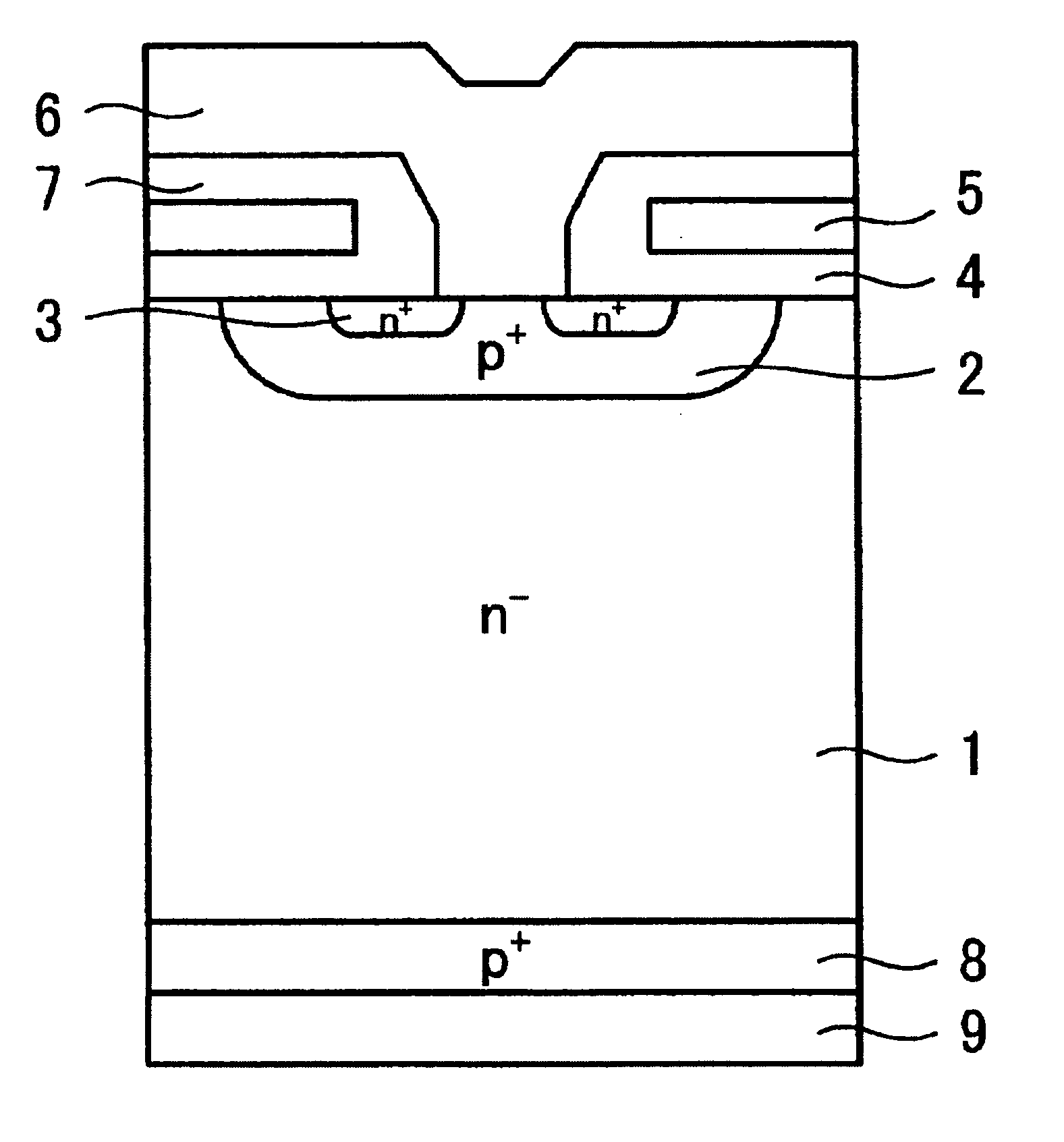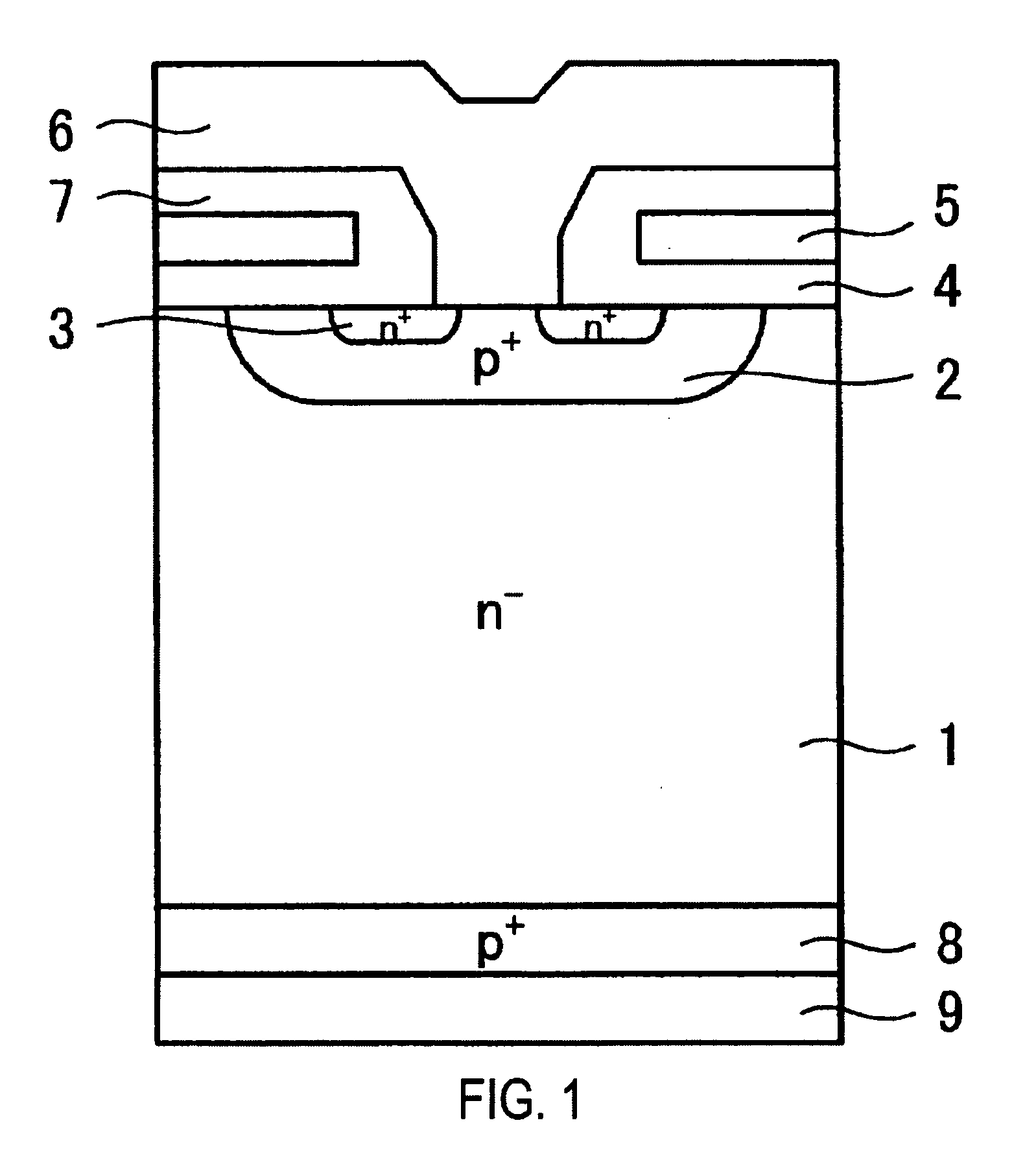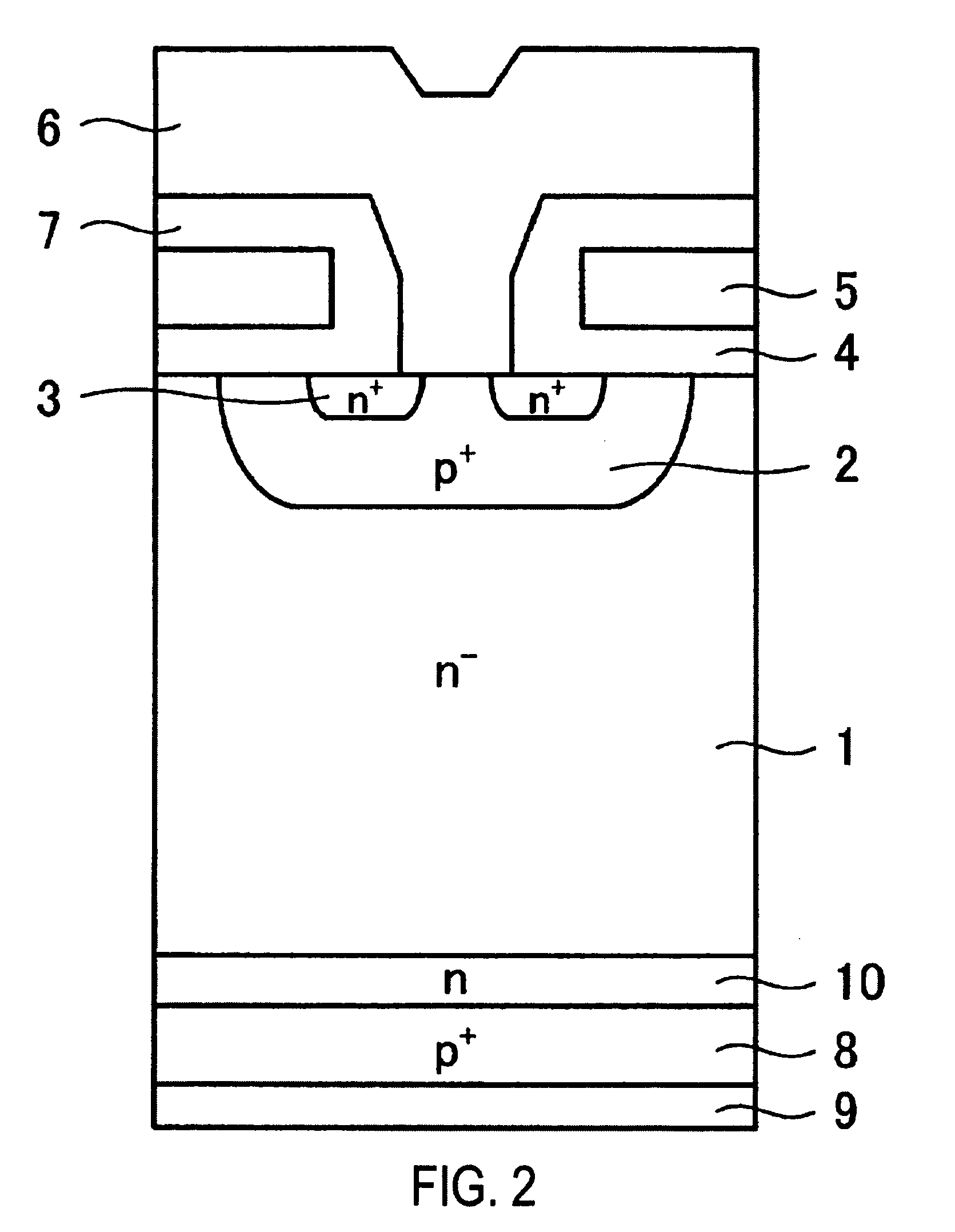Method of producing a semiconductor device with an aluminum or aluminum alloy electrode
a technology of aluminum alloy and semiconductor devices, applied in the direction of semiconductor devices, electrical equipment, transistors, etc., can solve the problems of unfavorable leakage current generation, loss of device function, and high cost of the epitaxial substrate, and achieve the effect of avoiding the generation of aluminum spikes
- Summary
- Abstract
- Description
- Claims
- Application Information
AI Technical Summary
Benefits of technology
Problems solved by technology
Method used
Image
Examples
first embodiment
[0050]FIG. 2 and FIG. 4 through 8 are sectional views illustrating a method of producing an FS type IGBT according to the invention. Referring to FIG. 2 and FIG. 4, in the front surface region of an n− FZ substrate (FZ-N), which Works as an active layer (a drift layer) 1, a front surface region device structure 12 is first formed consisting of a base region, an emitter region, a gate oxide film, a gate electrode, an interlayer insulation film, an emitter electrode, and an insulation protective film (omitted in FIG. 2).
[0051] The gate oxide film may be made of silicon oxide (SiO2), for example. The gate electrode may be made of polysilicon, for example. The interlayer insulation film may be made of BPSG, for example. The emitter electrode may be made of aluminum-silicon, for example. The aluminum-silicon film is heat treated at a relatively low temperature in the range of 350° C. to 450° C. in order to obtain a low resistance wiring with stable joining ability. The insulation protec...
second embodiment
[0059]FIGS. 11 through 14 are sectional views illustrating a method of manufacturing a reverse blocking IGBT according to the present invention. Referring to FIG. 11, a p type isolation region 15 is first formed in an n− FZ substrate that works as an active layer (a drift layer) 1 by selective thermal diffusion of p type ions from above. To produce a device of a rating voltage of 1,200 V, the p type ions are diffused to a depth of about 200 μm.
[0060] Subsequently, as shown in FIG. 12, a front surface side device structure is formed in the surface region of the FZ substrate surrounded by the isolation region 15, the device structure being composed of a base region 2, an emitter region 3, a gate oxide film 4, a gate electrode 5, an interlayer insulation film 7, and emitter electrode 6, and an insulation protective film (not shown in the figure). Then, the rear surface of the substrate is ground by back grinding or the like, until the isolation region 15 is exposed as indicated by a d...
PUM
 Login to View More
Login to View More Abstract
Description
Claims
Application Information
 Login to View More
Login to View More - R&D
- Intellectual Property
- Life Sciences
- Materials
- Tech Scout
- Unparalleled Data Quality
- Higher Quality Content
- 60% Fewer Hallucinations
Browse by: Latest US Patents, China's latest patents, Technical Efficacy Thesaurus, Application Domain, Technology Topic, Popular Technical Reports.
© 2025 PatSnap. All rights reserved.Legal|Privacy policy|Modern Slavery Act Transparency Statement|Sitemap|About US| Contact US: help@patsnap.com



